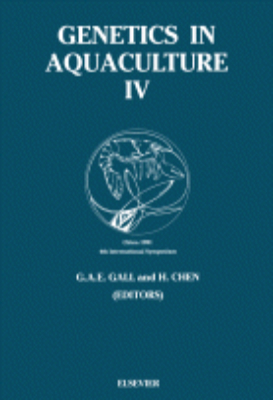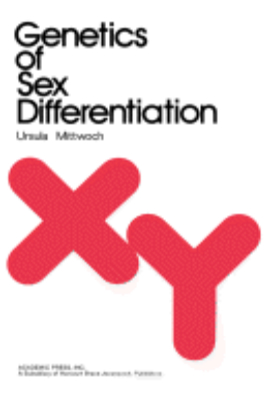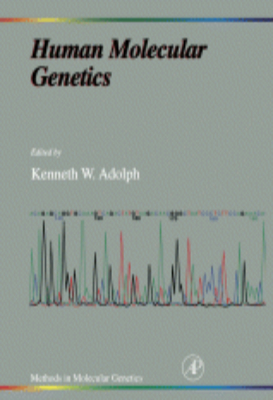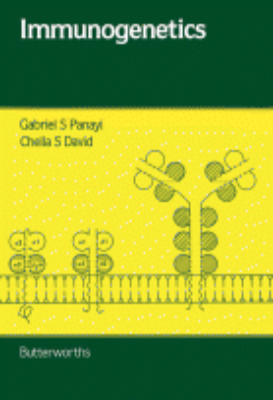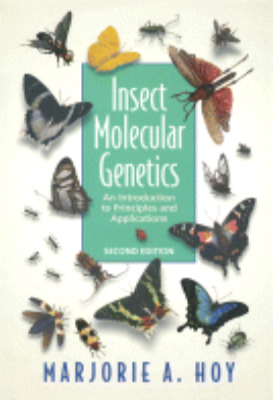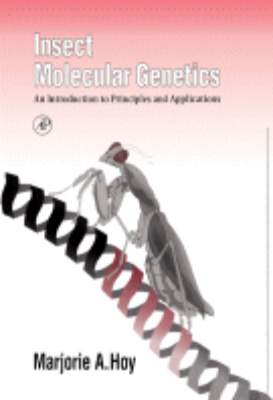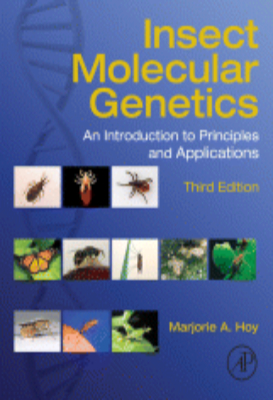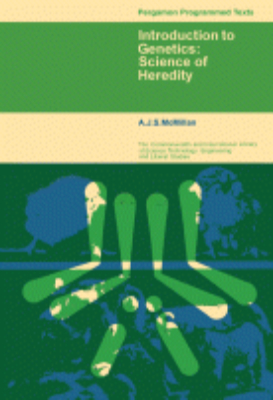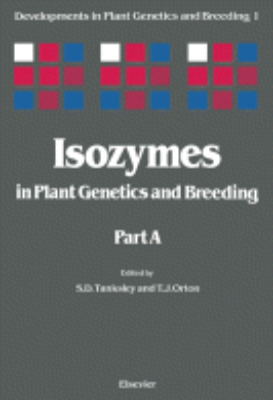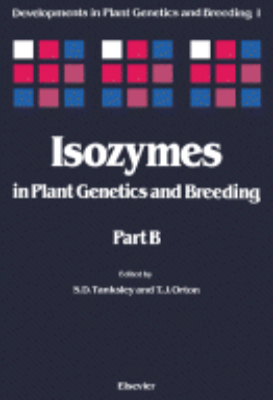E-Resources
Genetics for Cat Breeders
Genetics for Cat Breeders, Second Edition covers the considerable advances in the practical application of genetics to cat breeding. This book is divided into nine chapters and begins with a discussion of the elementary principles of heredity. The subsequent chapters deal with the practical aspects of feline reproduction and development and the main factors in the practice of cat breeding. Other chapters examine the genetics of feline color and coat variation and breeds. These topics are followed by a review on the problem of genetic defects in cats. The last chapters considers the importance of record keeping in animal breeding, including providing an accurate record of familial relationship, information upon the phenotype characteristics and breeding performance, and a source of data for future decisions. This book will be of great value to biologists, cat breeders, and researchers.
Genetics in Aquaculture
This volume, the proceedings of the Fourth International Symposium on Genetics in Aquaculture, builds on the foundations laid down at the first symposium, held in Galway, Ireland in 1982 (Aquaculture, Volume 33), as well as those laid down at the second, held in Davis, California, USA in 1985 (Genetics in Aquaculture II), and the third, held in Trondheim, Norway in 1988 (Genetics in Aquaculture III). It addresses specific problems and developments in this field, demonstrating the tremendous breadth of research activity as well as the complexity of issues in aquaculture genetics. This book will be of great value to aquaculturists, fisheries scientists and marine biologists. (The above-mentioned proceedings of the first three conferences are still available).
Genetics of Bacterial Diversity
While other texts in this area deal almost solely with the "workhorse strain" Escherischia coli, Genetics of Bacterial Diversity is the first to deal with genetics and molecular biology of the wide range of other bacteria, which carry out a whole spectrum of important scientific, medical, agricultural, and biotechnological activities. Taking genetic diversity as its theme it illustrates a range of interesting phenomena such as genetic systems controlling pathogenicity, symbiosis, chemotaxis, metabolic characteristics, and differentiation. With each chapter written by acknowledged experts, this definitive book contains up-to-the-minute information on this rapidly developing field.Written by leading experts, this text--aimed at graduate-level students and above--describes the genetics and molecular biology of a wide range of bacteria.
Genetics of Bacterial Diversity: 1989
Genetics of Bacterial Diversity focuses on the rapidly developing field of ""non-K-12"" bacterial genetics that is largely outside the scope of other texts. The book begins with an introductory chapter that outlines the phylogenetic relationships of bacteria and the range of metabolic, behavioral, and developmental phenomena displayed by them. Two chapters then review the genetic processes found in bacteria generally, and discuss a range of genetic techniques used to analyze the various special systems described in the body of the book, respectively. Subsequent chapters deal with various special metabolic capabilities characteristic of certain groups of bacteria (light production, photosynthesis, nitrogen fixation, antibiotic production, degradation of aromatic compounds and mercury resistance); developmental processes of cell-cycle associated motility, sporulation, and specialized colonial behavior; four components of bacterial pathogenicity for animals; and pathogenic and symbiotic interactions of bacteria with higher plants. The final chapter explains some of the concepts and the progress being made in the application of population genetics to bacteria. This book may be of interest to microbiologists wishing to catch up on the genetic basis of some of the classical phenomena of bacteriology, and geneticists unfamiliar with some of the things that bacteria can accomplish.
Genetics of Bone Biology and Skeletal Disease
This book identifies and analyzes the genetic basis of bone disorders in humans and demonstrates the utility of mouse models in furthering the knowledge of mechanisms and evaluations of treatments. The book is aimed at all students of bone biology and genetics, and with this in mind, it includes general introductory chapters on genetics and bone biology and more specific disease-orientated chapters, which comprehensively summarize the clinical, genetic, molecular genetic, animal model, functional and molecular pathology, diagnostic, counselling and treatment aspects of each disorder.
Genetics of Movement Disorders
Hereditary or genetic diseases featuring involuntary movements constitute a major aspect of the practice of neurology, functional neurosurgery, genetics, and many areas of basic and applied neuroscience research. Describing the current knowledge on these disorders, Genetics of Movement Disorders brings together information essential for clinicians, geneticists, and neuroscientists in one source. Utilizing a convenient and accessible format, the book is designed to allow easy identification of relevant information, with the overall organization of topics following established phenotypic classifications of movement disorders such as Parkinsonian syndromes, chorea, ataxia, and major categories of diseases grouped by gene locus. This book broadly appeals to neurologists, neuroscientists, geneticists, as well as cell and molecular biologists and hematologists.
Genetics of Reproduction in Sheep
Genetics of Reproduction in Sheep is a compilation of papers that are concerned with the study and application of genetics to the reproduction in sheep. The book is divided into six parts, grouping the papers according to topic. The main topics include genetic variation and selection; the inheritance and the effects of the Booroola gene; genetic strategies for single genes; physiology of genetic variation; the physiological criteria of genetic merit; and the national requirement and systems of husbandry. The text is recommended for those involved with raising sheep and plan to apply genetics in their reproduction, as well as for geneticists who wish to conduct studies on how their field is applied to sheep reproduction.
Genetics of Sex Differentiation
Genetics of Sex Differentiation intends to help readers understand the genetic basis of sex differentiation. The book focuses on explaining how the sex chromosomes affect the process of sex differentiation by influencing the rates at which cells divide. The book is composed of seven chapters. It provides overviews of classical genetics and structure of cells. It also explains the chromosomal basis of sex determination and sex determination using Drosophila. Polygenetics and continuous and quasicontinuous variations are also discussed. The book also discusses sex factors, determination, and disorders. Moreover, it explains the heterochromatin, embryological basis of sex differentiation, and triploidy and autosomal effects. In addition, it discusses the relationship of genes, chromosomes, growth, and sex. The book is an excellent ""bedside book"" for students in biology, specifically in genetics and developmental biology. Lecturers and professionals in biology and genetics will also find this book invaluable for their practice.
Genetics of the Norway Rat
Genetics of the Norway Rat details the various genetic traits of Norway rat. The book covers a wide spectrum of trait inheritance, from color variation up to the various genetic mutation and quirks. The coverage of the text includes growth, metabolism, reproduction, and endocrinology. Several chapters also cover the physiological traits that include skeleton, viscera, sensory organs, and nervous. The text also takes into consideration the immunogenetics, pharmacogenetics, psychogenetics, and cytogenetics of the species studied. The book will be of great interest to mammalian geneticists. Researchers who are using rats as a test subject in their research will also benefit from the text.
Genetics Structure and Function of Blood Cells
Genetics, Structure and Function of Blood Cells contains the proceedings of the symposia of the 28th International Congress of Physiology held in Budapest between 13 and 19 of July, 1980. Organized into six parts, this book begins with a discussion on the genetic regulation of hemoglobin synthesis. Parts II and III describe the immunoglobulin receptors and their effectors, and antenatal development of human blood cells. Subsequent parts talk about regulation of differentiation of hemoglobin structure and function and the role of calcium in red cell membrane transport processes. The last part elucidates the structure and function of blood cell membranes.
Handbook of Epigenetics
Epigenetics is considered by many to be the "new genetics" because of the overwhelming evidence of the contribution of non-genetic factors such as nutrition, environment, and chemical exposure on gene expression. The effects of epigenetics are vast, including tissue/organ regeneration, X-chromosome inactivation, and stem cell differentiation and genomic imprinting and aging. Aberrations of epigenetics influence many diseases for which clinical intervention is already in place, and many novel epigenetic therapies for cancer, immune disorders, neurological and metabolic disorders, and imprinting diseases are on the horizon. This comprehensive collection of reviews written by leaders in the field of epigenetics provides a broad view of this important and evolving topic. From molecular mechanisms and epigenetic technology to discoveries in human disease and clinical epigenetics, the nature and applications of the science will be presented for those with interests ranging from the fundamental basis of epigenetics to therapeutic interventions for epigenetic-based disorders.
Handbook of Genetics and Genomics in Clinical Neurpsychiatry
This foundational work comprehensively examines the current state of the genetics, genomics and brain circuitry of psychiatric and neurological disorders. It consolidates discoveries of specific genes and genomic regions associated with these conditions, the genetic and anatomic architecture of these syndromes, and addresses how recent advances in genomics are leading to a reappraisal of the biology underlying clinical neuroscience. In doing so, it critically examines the promise and limitations of these discoveries toward treatment, and to the interdisciplinary nature of understanding brain and behavior. Coverage includes new discoveries regarding autism, epilepsy, intellectual disability, dementias, movement disorders, language impairment, disorders of attention, schizophrenia, and bipolar disorder. Genomics, Circuits, and Pathways in Clinical Neuropsychiatry focuses on key concepts, challenges, findings, and methods in genetics, genomics, molecular pathways, brain circuitry, and related neurobiology of neurologic and psychiatric disorders.
Human Cytogenetics
Human Cytogenetics: Clinical Cytogenetics, Volume II presents the general theoretical principles and clinical aspects of cytogenetics, a branch of genetics that deals specifically with the study of the chromosomes. The volume focuses on the clinical cytogenetics of human. It discusses the sex chromosomes and their abnormalities and the abnormalities of sexual development and differentiation; mechanism of sex determination in mammals; major autosomal abnormalities found in human populations; and chromosome abnormalities in relation to human pregnancy wastage and chromosome changes in neoplasia. The book will be a great reference book for geneticists, cytogeneticists, pathologists, clinicians, and medical students.
Immunogenetics
Immunogenetics is a 12-chapter book that begins with the elucidation of the major histocompatibility complex genes and their role in autoimmune and infectious diseases. Subsequent chapters explore the human major histocompatibility complex, including implications of their complement genes for linkage disequilibrium and disease associations. This book also describes the genetics of human immunoglobulins; T-cell clones; genes of the major histocompatibility complex of the mouse; and the generation, characterization, and use of monoclonal antibodies of murine and human origin. Specific diseases are also discussed; these include spondoarthritides, rheumatoid arthritis, systemic lupus erythematosus, multiple sclerosis, and autoimmune thyroid disease. This book will be of beneficial value to specialists in infectious diseases, endocrinology, connective tissue diseases, and neurology, as well as to medical scientists in immunology and molecular biology.
Insect Molecular Genetics, 2nd ed.-key
Insect Molecular Genetics, 2nd edition, is a succinct book that briefly introduces graduate and undergraduate students to molecular genetics and the techniques used in this well established and important discipline. The book is written for two converging audiences: those familiar with insects that need to learn about molecular genetics, and those that are familiar with molecular genetics but not familiar with insects. Thus, this book is intended to fill the gap between two audiences that share a common middle ground.
Insect Molecular Genetics: 1994
Developed as an introduction to new molecular genetic techniques, Insect Molecular Genetics also provides literature, terminology, and additional sources of information to students, researchers, and professional entomologists. Although most molecular genetics studies have employed Drosophila, this book applies the same techniques to other insects, including pest insects of economic importance.As a text, as a reference, as a primer, and as a review of a vast and growing literature, Insect Molecular Genetics is a valuable addition to the libraries of entomologists, geneticists, and molecular biologists.
Insect Molecular Genetics: Third Edition 2013
Insect Molecular Genetics, Third Edition, summarizes and synthesizes two rather disparate disciplinesentomology and molecular genetics. This volume provides an introduction to the techniques and literature of molecular genetics; defines terminology; and reviews concepts, principles, and applications of these powerful tools. The world of insect molecular genetics, once dominated by Drosophila, has become much more diverse, especially with the sequencing of multiple arthropod genomes (from spider mites to mosquitoes). This introduction includes discussion of honey bees, mosquitoes, flour beetles, silk moths, fruit flies, aphids, house flies, kissing bugs, cicadas, butterflies, tsetse flies and armyworms. This book serves as both a foundational text and a review of a rapidly growing literature. With fully revised and updated chapters, the third edition will be a valuable addition to the personal libraries of entomologists, geneticists, and molecular biologists.
Introduction to Forest Genetics
Introduction to Forest Genetics examines some of the basic genetic concepts typically used in forestry and tree improvement studies, including Mendelian and population genetics. It also describes techniques that are generally useful in tree improvement work, including individual tree selection and breeding, provenance testing, species and racial hybridization, and introduction of exotics. Organized into 19 chapters, this volume begins with an overview of forest genetics and problems associated with forest genetics. It then discusses concepts from basic genetics, including chromosome structure and function; DNA and RNA; nongenetic inheritance; and genotype versus phenotype. Other chapters focus on inbreeding: complete elimination of homozygous recessive trees; mutation and migration; and controlled pollination and vegetative propagation. The book also covers the establishment and measurement of test plantations; general principles and methods of selective breeding; choice of breeding method and type of seed orchard; heritability and genetic gain; geographic variation in Scotch pine and American trees; species and racial hybridization; chromosome studies; and polyploidy and haploidy breeding. This book is a valuable resource for foresters, professional tree breeders, and those with or without previous training in genetics or forestry.
Introduction to Genetics
Introduction to Genetics: Science of Heredity presents a linear programmed text about hereditary and genetics. This book discusses a variety of topics related to heredity and genetics, including chromosomes, genes, Mendelism, mitosis, and meiosis. Organized into six chapters, this book begins with an overview of some of the experiments that first provide an understanding of heredity and laid the foundation of the science of genetics. This text then provides detailed information about the cell and explains how the essential parts of it reproduce and divide. Other chapters consider how the chromosome theory can explain not only the facts of Mendelism, but also the many complications that arise in genetics. This book discusses as well the problems that can happen during the process of mitosis and meiosis. The final chapter deals with the practical problems that confront the plant breeder. This book is a valuable resource for teachers and students of biology.
Lepidoptera Genetics
Lepidoptera Genetics provides a systematic account of the genetics and karyology of Lepidoptera. Topics covered include the use of biometry in genetic studies; population genetics and polymorphism; the rise of industrial melanism; and the evolution of mimicry. The genetics of Rhopalocera and Heterocera is also discussed. This book is comprised of eight chapters and begins with an overview of Lepidoptera species and their genetics, paying particular attention to color and pigmentation, breeding, and resistance to insecticides, as well as the effect of seasonal variations and the environment on Lepidoptera. The next chapter outlines the tenets of genetics that are of value for Lepidoptera research, including particulate heredity, random assortment, sex-linked inheritance, maternal inheritance, and mosaicism. The reader is methodically introduced to the application of biometry to the study of Lepidoptera genetics; the evolution of mimicry in Lepidoptera; and the known heredity of Rhopalocera and Heterocera. The final chapter examines the karyology of Lepidoptera, focusing on the haploid karyotype, polyploidy, chiasmata frequency, supernumerary chromosomes, and sex chromatin. This monograph will be a useful resource for entomologists, geneticists, and biologists.
Mammalian Cytogenetics and Related Problems in Radiobiology
Mammalian Cytogenetics and Related Problems in Radiobiology covers the proceedings of a symposium held in Sao Paulo and Rio de Janeiro, Brazil in October 1962. The book focuses on the processes, methodologies, and approaches involved in mammalian cytogenetics and radiobiology. The selection first offers information on the nutrition and metabolism of cultured mammalian cells, blood technique and human chromosomes, and DNA replication in human chromosomes. Discussions focus on replication of heterochromatin in the human male; difficulties involved in the study of DNA synthesis in human chromosomes; and perspectives for future research. The text then ponders on the progress in the utilization of cell culture techniques for studies in mammalian and human somatic cell genetics and modification of radiation effects in the Ehrlich ascites tumor by oxygen or sodium azide. The manuscript examines experimental studies on mammalian chromosome aberrations, chromosome breakage in vitro, and survival of human cells in tissue culture after irradiation with densely and sparsely ionizing radiation. The text then elaborates on the observations on the morphology and behavior of normal human chromosomes, human pachytene chromosomes, and abnormalities of autosomes. The selection is a vital reference for readers interested in mammalian cytogenetics and radiobiology.
Medical Epigenetics
Medical Epigenetics provides a comprehensive analysis of the importance of epigenetics to health management. The purpose of this book is to fill a current need for a comprehensive volume on the medical aspects of epigenetics with a focus on human systems, epigenetic diseases that affect these systems and modes of treating epigenetic-based disorders and diseases. The intent of this book is to provide a stand-alone comprehensive volume that will cover all human systems relevant to epigenetic maladies and all major aspects of medical epigenetics. The overall goal is to provide the leading book on medical epigenetics that will be useful not only to physicians, nurses, medical students and many others directly involved with health care, but also investigators in life sciences, biotech companies, graduate students and many others who are interested in more applied aspects of epigenetics. Research in the area of translational epigenetics is a cornerstone of this volume.
Methods and Goals in Human Behavior Genetics
Methods and Goals in Human Behavior Genetics examines trends in behavior genetics research and presents a critical review of methodology. This volume was planned to be of interest to two types of readers. First it provides information for psychologists who are interested in the genetics of personality and ability. Second, it is hoped that the volume will be of some value to geneticists who are desirous of knowing about recent attempts by psychologists to study hereditary factors in human behavior. The contributions to this volume are in some cases similar to papers presented during a meeting held in Louisville where this volume was planned, while the comments following these papers are based on tape recordings of the ensuing discussions. The book opens with a discussion of biochemical genetics and gene action. Separate chapters follow in topics such as application of anthropology to genetics, twin studies, heritability of personality traits, and suggestions for human behavior genetics based on animal studies.


